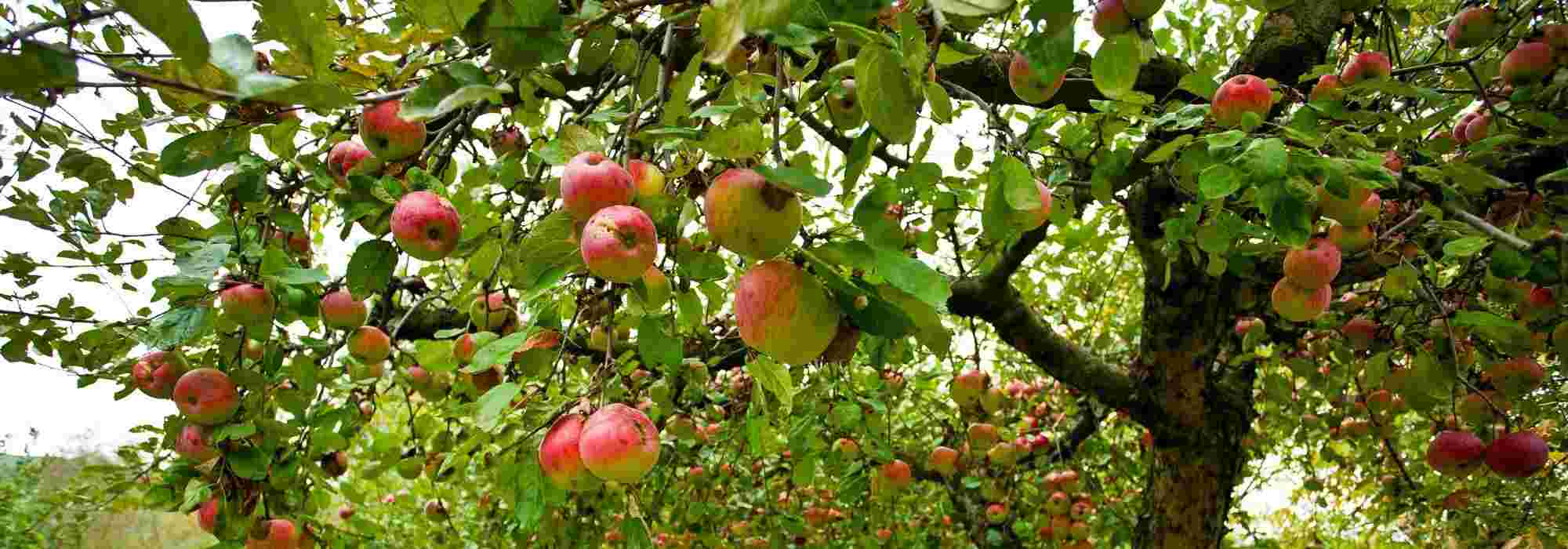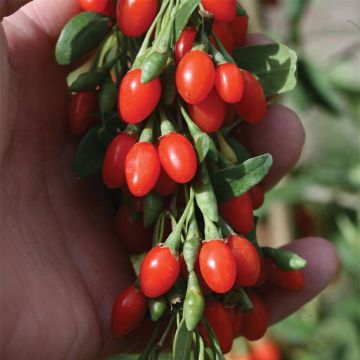

Asimina triloba Shenandoah - Pawpaw


Asimina triloba Shenandoah - Pawpaw


Asimina triloba Shenandoah - Pawpaw
Asimina triloba Shenandoah - Pawpaw
Asimina triloba Shenandoah
Pawpaw, Paw Paw, Paw-Paw, Common Pawpaw, Indiana Banana, American Custard Apple
belle plante, pousse très bien
Mireille, 17/04/2023
Special offer!
Receive a €20 voucher for any order over €90 (excluding delivery costs, credit notes, and plastic-free options)!
1- Add your favorite plants to your cart.
2- Once you have reached €90, confirm your order (you can even choose the delivery date!).
3- As soon as your order is shipped, you will receive an email containing your voucher code, valid for 3 months (90 days).
Your voucher is unique and can only be used once, for any order with a minimum value of €20, excluding delivery costs.
Can be combined with other current offers, non-divisible and non-refundable.
Home or relay delivery (depending on size and destination)
Schedule delivery date,
and select date in basket
This plant carries a 6 months recovery warranty
More information
We guarantee the quality of our plants for a full growing cycle, and will replace at our expense any plant that fails to recover under normal climatic and planting conditions.
Description
The Asimina triloba 'Shenandoah' is a small, exotic-looking fruit tree that produces huge fruits resembling mangoes. Formed late in the season (October), they have a sweet and sugary taste reminiscent of mangoes and bananas. Although not widely spread in France, it is a hardy tree in our territory. Its slow growth and small size make it suitable for planting in all gardens, even small ones. It is relatively easy to cultivate, thrives in neutral to acidic soil, is not too dry in summer, and is preferably in full sun.
The pawpaw tree is the only representative of the tropical Annonaceae family in temperate climates. Nine species are present in the United States, with Asimina triloba being the hardiest of all (even in the far south of Canada). It is a small tree that grows slowly, with a well-branched and bushy appearance. Its habit is generally oval, sometimes even pyramidal, on a relatively short trunk, even branching from the ground, giving it more the appearance of a large bush than a tree. The large, narrow, single leaves, about 25 cm (10in) long, hang lazily towards the ground, giving it a characteristic and evocative tropical look. In autumn, they turn a bright yellow, which is quite striking. Its 6-petaled flowers form beautiful burgundy bell-shaped blossoms in April-May, although their modest size (3-4 cm (1-2in)) and often isolated distribution on the branches offer limited appeal. They appear on old branches.
The Asimina triloba 'Shenandoah' can reach a height of 5 m (16ft) and a width of about 3 m (10ft). This variety was selected by the American specialist Neal Peterson from a seedling of the Overleese variety. This 'Shenandoah' variety has been chosen for its large fruits, approximately 6 cm (2in) in diameter and 11 cm (4in) long (about 500 grams), with green skin and yellow flesh of excellent quality. The flesh, with a creamy texture, has a sweet and sugary flavour, and the fruits contain few seeds. It is a very productive variety, with fruits ripening in October. Being self-fertile, it is necessary to plant another variety of pawpaw trees nearby for pollination and fruit production. The nickname 'northern mango' for the pawpaw tree comes from the evocative shape of the fruits, with green skin even when ripe. At the same time, the sweet flesh resembles the taste of mangoes and bananas (which is why it is sometimes also marketed as Indian banana or poor man's banana). The fruits contain about ten large black seeds and should be harvested when the flesh becomes tender. Harvesting should be done gently, and the fruits can even be picked up from the ground. They should be consumed quickly (they only keep for a few days at room temperature) or stored in the refrigerator (up to 2 weeks). The pawpaw tree has a delicious taste and a high nutritional value (especially rich in vitamins A and C). Americans consume it fresh or prepare it as juice, sorbet, cake, etc.
The Asimina triloba 'Shenandoah' will find its place in an urban garden, possibly near a wall to protect it from strong winds. Its slow growth should not make us forget to leave enough space for its future development. It is also important to plant it in pairs to allow cross-pollination and ensure fruit production. Although primarily a fruit tree, its ornamental value encourages us to associate it with other decorative plants. It can be integrated into an exotic-looking garden, combined with a Japanese Banana Tree (Musa basjoo) with its evocative tropical aesthetics, which is hardy in our climate. Another fruit tree with foliage reminiscent of southern regions, the Fuyu Persimmon (Diospyros 'Fuyu'), will also be a good companion for this pawpaw tree, as well as the Hardy Orange (Poncirus trifoliata), a small hardy citrus. To highlight its autumnal colours, it can be associated with orange or red-coloured plants as winter approaches, such as the Golden Sweetgum (Liquidambar 'Golden Sun'), whose yellow spring foliage turns green during the season before colouring purple-red in autumn, creating a permanent contrast with our little pawpaw tree.
Asimina triloba Shenandoah - Pawpaw in pictures






Plant habit
Fruit
Flowering
Foliage
Botanical data
Asimina
triloba
Shenandoah
Annonaceae
Pawpaw, Paw Paw, Paw-Paw, Common Pawpaw, Indiana Banana, American Custard Apple
Cultivar or hybrid
Other Asimina trees
View all →Planting and care
The pawpaw tree takes time to establish itself, so patience is vital! It takes about ten years to obtain a plant of approximately 2.50 metres (8 feet) in height and at least three years before the first fruiting.
Given this slow growth, providing the best planting conditions is essential.
This species can withstand temperatures as low as -25°C (-13°F) and requires cold weather to flower and warm weather in the summer, but not excessively. It cannot tolerate dry soils or drying winds, as it needs moisture in the summer.
Provide it with well-drained, neutral, acidic soil (avoid stagnant water) deep enough to develop the root system properly.
Light shading and mulching the soil with organic matter (leaves, compost, etc.) above the roots will help it survive dry summer periods.
Planting in autumn to take advantage of rainfall or in spring with regular watering during the summer is preferable. Choose young plants, as a taproot system is not well-suited for extended periods in a container. However, avoid tiny plants (plug plants), as they may have difficulty establishing themselves on open ground.
Dig a planting hole at least 60 cm (24in) deep and enrich it with compost and planting soil. Carefully position the root ball in the planting hole to avoid damaging the roots, then fill the hole generously with a mixture of existing soil, planting soil, and water to compact the soil.
Planting period
Intended location
Care
Planting & care advice
-
, onOrder confirmed
Reply from on Promesse de fleurs
Similar products
Haven't found what you were looking for?
Hardiness is the lowest winter temperature a plant can endure without suffering serious damage or even dying. However, hardiness is affected by location (a sheltered area, such as a patio), protection (winter cover) and soil type (hardiness is improved by well-drained soil).

Photo Sharing Terms & Conditions
In order to encourage gardeners to interact and share their experiences, Promesse de fleurs offers various media enabling content to be uploaded onto its Site - in particular via the ‘Photo sharing’ module.
The User agrees to refrain from:
- Posting any content that is illegal, prejudicial, insulting, racist, inciteful to hatred, revisionist, contrary to public decency, that infringes on privacy or on the privacy rights of third parties, in particular the publicity rights of persons and goods, intellectual property rights, or the right to privacy.
- Submitting content on behalf of a third party;
- Impersonate the identity of a third party and/or publish any personal information about a third party;
In general, the User undertakes to refrain from any unethical behaviour.
All Content (in particular text, comments, files, images, photos, videos, creative works, etc.), which may be subject to property or intellectual property rights, image or other private rights, shall remain the property of the User, subject to the limited rights granted by the terms of the licence granted by Promesse de fleurs as stated below. Users are at liberty to publish or not to publish such Content on the Site, notably via the ‘Photo Sharing’ facility, and accept that this Content shall be made public and freely accessible, notably on the Internet.
Users further acknowledge, undertake to have ,and guarantee that they hold all necessary rights and permissions to publish such material on the Site, in particular with regard to the legislation in force pertaining to any privacy, property, intellectual property, image, or contractual rights, or rights of any other nature. By publishing such Content on the Site, Users acknowledge accepting full liability as publishers of the Content within the meaning of the law, and grant Promesse de fleurs, free of charge, an inclusive, worldwide licence for the said Content for the entire duration of its publication, including all reproduction, representation, up/downloading, displaying, performing, transmission, and storage rights.
Users also grant permission for their name to be linked to the Content and accept that this link may not always be made available.
By engaging in posting material, Users consent to their Content becoming automatically accessible on the Internet, in particular on other sites and/or blogs and/or web pages of the Promesse de fleurs site, including in particular social pages and the Promesse de fleurs catalogue.
Users may secure the removal of entrusted content free of charge by issuing a simple request via our contact form.
The flowering period indicated on our website applies to countries and regions located in USDA zone 8 (France, the United Kingdom, Ireland, the Netherlands, etc.)
It will vary according to where you live:
- In zones 9 to 10 (Italy, Spain, Greece, etc.), flowering will occur about 2 to 4 weeks earlier.
- In zones 6 to 7 (Germany, Poland, Slovenia, and lower mountainous regions), flowering will be delayed by 2 to 3 weeks.
- In zone 5 (Central Europe, Scandinavia), blooming will be delayed by 3 to 5 weeks.
In temperate climates, pruning of spring-flowering shrubs (forsythia, spireas, etc.) should be done just after flowering.
Pruning of summer-flowering shrubs (Indian Lilac, Perovskia, etc.) can be done in winter or spring.
In cold regions as well as with frost-sensitive plants, avoid pruning too early when severe frosts may still occur.
The planting period indicated on our website applies to countries and regions located in USDA zone 8 (France, United Kingdom, Ireland, Netherlands).
It will vary according to where you live:
- In Mediterranean zones (Marseille, Madrid, Milan, etc.), autumn and winter are the best planting periods.
- In continental zones (Strasbourg, Munich, Vienna, etc.), delay planting by 2 to 3 weeks in spring and bring it forward by 2 to 4 weeks in autumn.
- In mountainous regions (the Alps, Pyrenees, Carpathians, etc.), it is best to plant in late spring (May-June) or late summer (August-September).
The harvesting period indicated on our website applies to countries and regions in USDA zone 8 (France, England, Ireland, the Netherlands).
In colder areas (Scandinavia, Poland, Austria...) fruit and vegetable harvests are likely to be delayed by 3-4 weeks.
In warmer areas (Italy, Spain, Greece, etc.), harvesting will probably take place earlier, depending on weather conditions.
The sowing periods indicated on our website apply to countries and regions within USDA Zone 8 (France, UK, Ireland, Netherlands).
In colder areas (Scandinavia, Poland, Austria...), delay any outdoor sowing by 3-4 weeks, or sow under glass.
In warmer climes (Italy, Spain, Greece, etc.), bring outdoor sowing forward by a few weeks.






















































